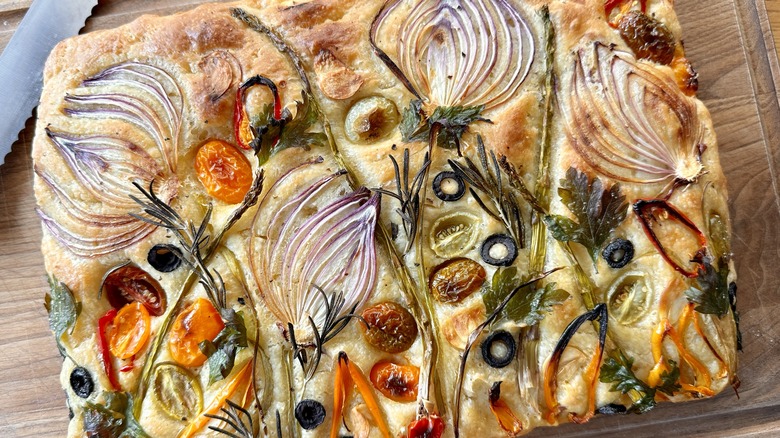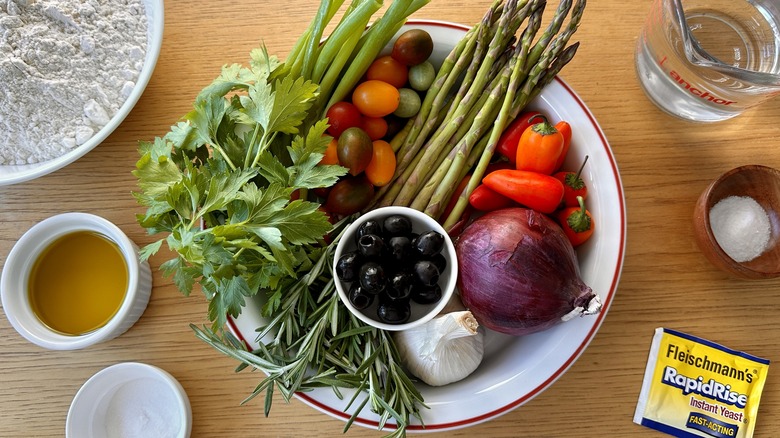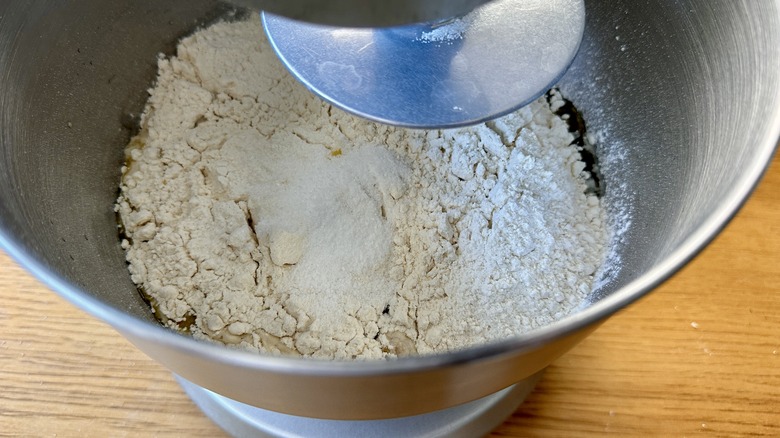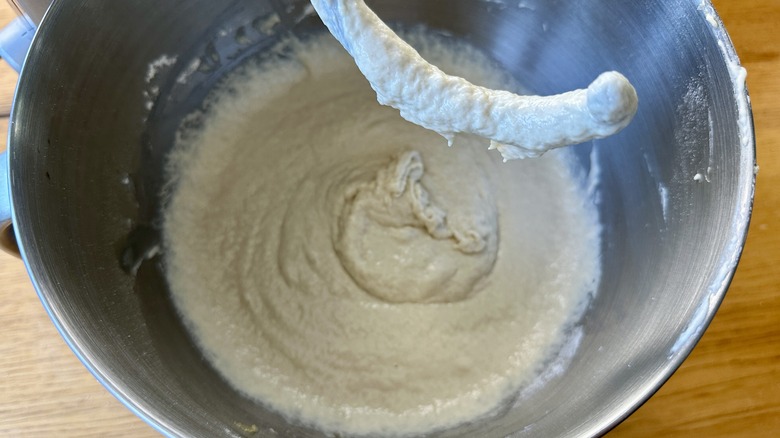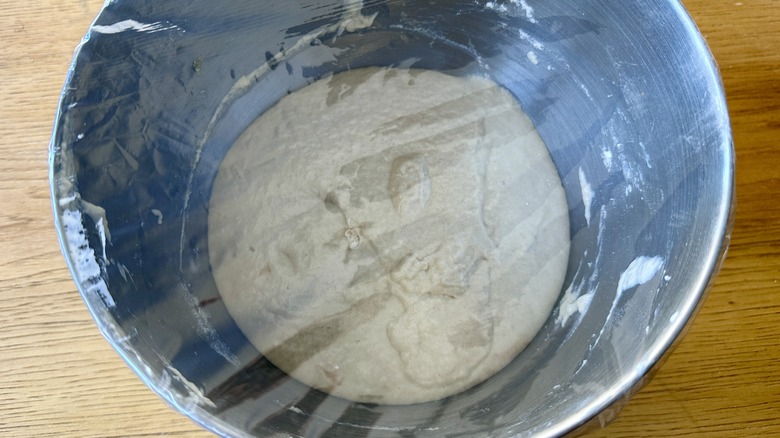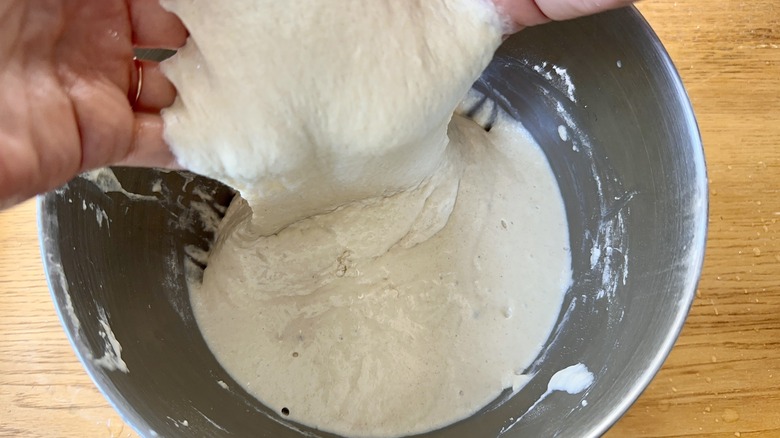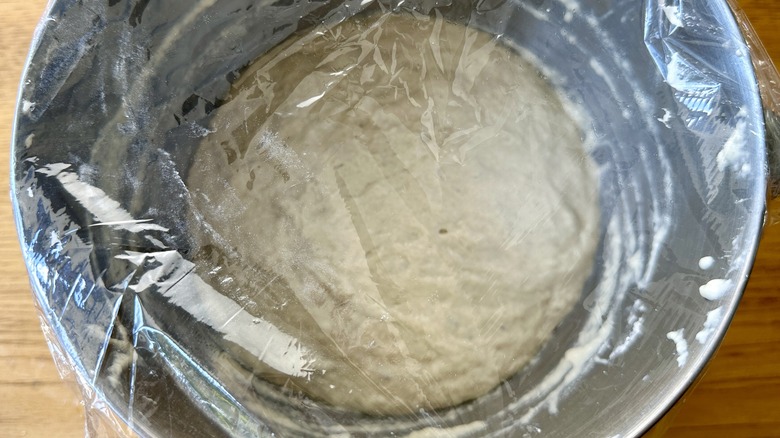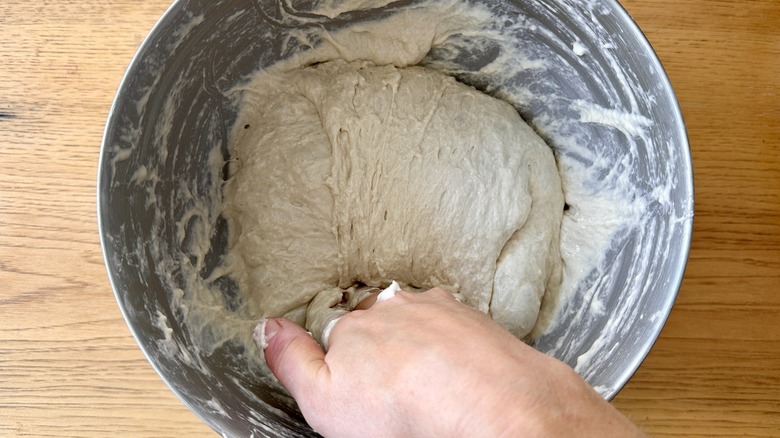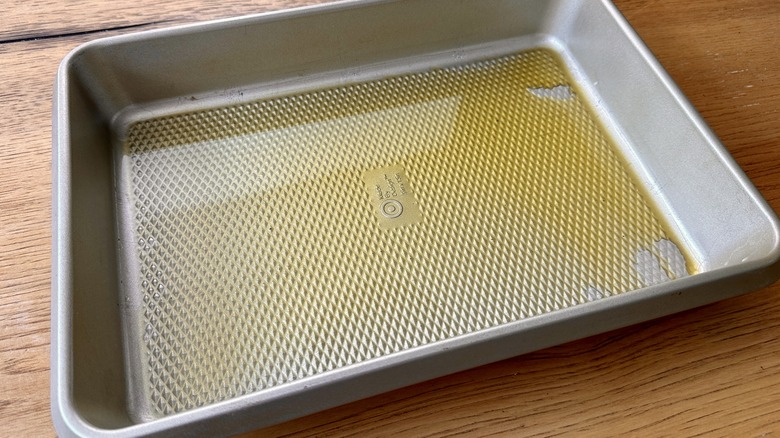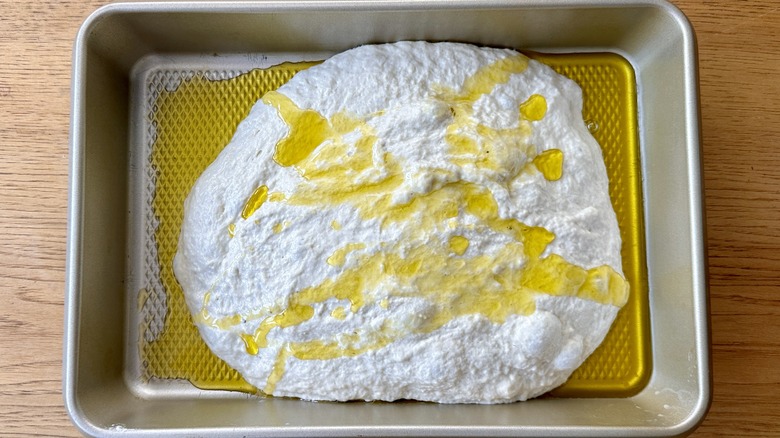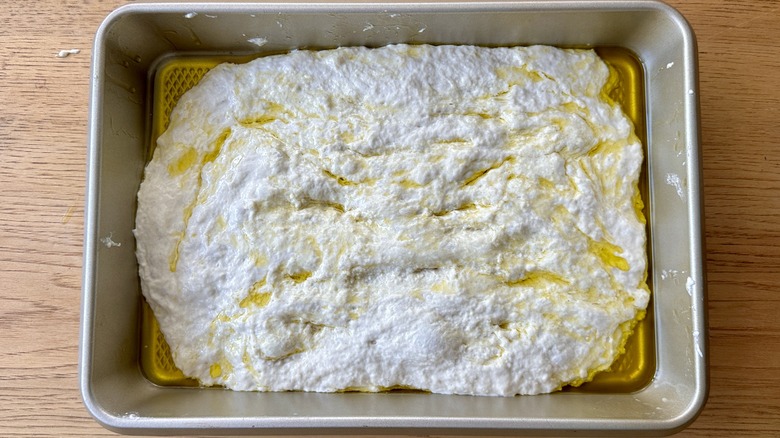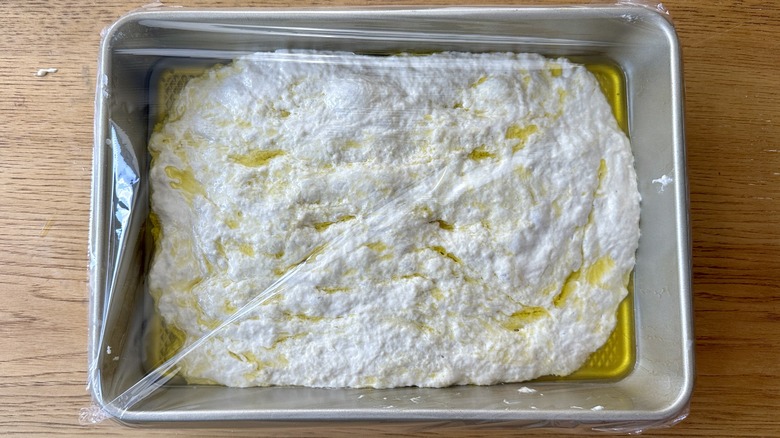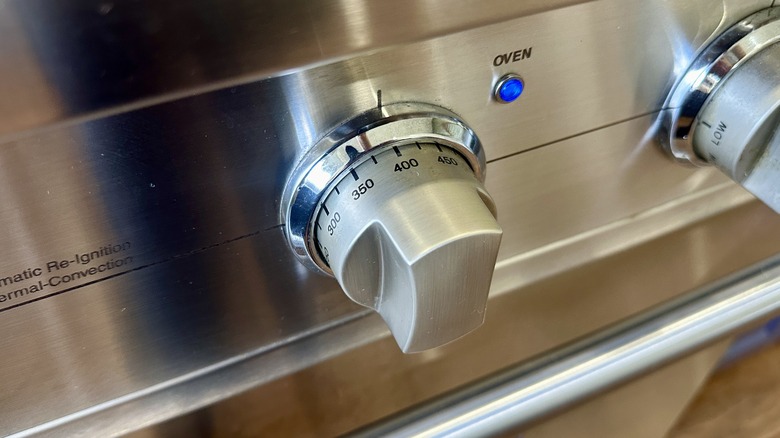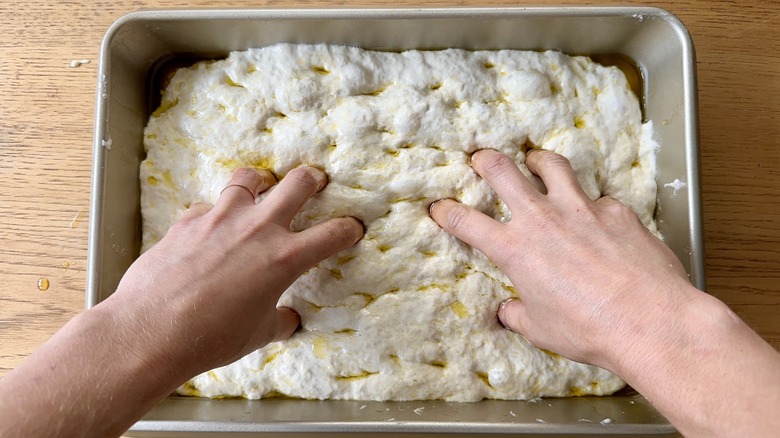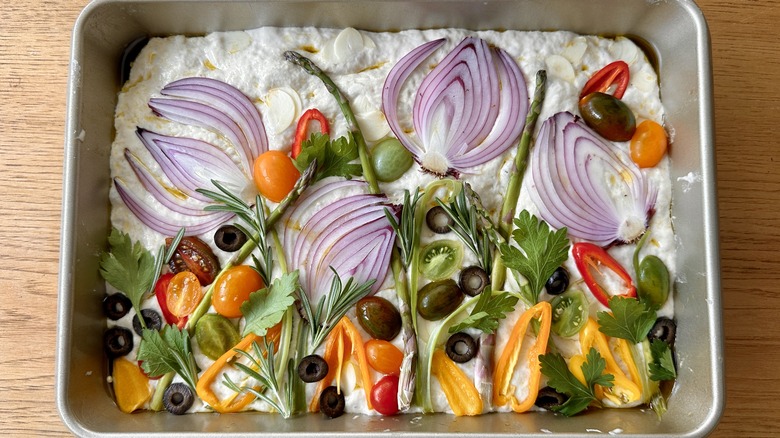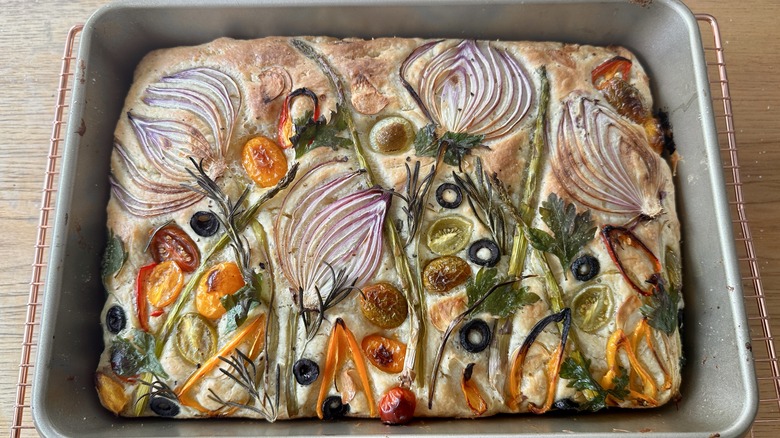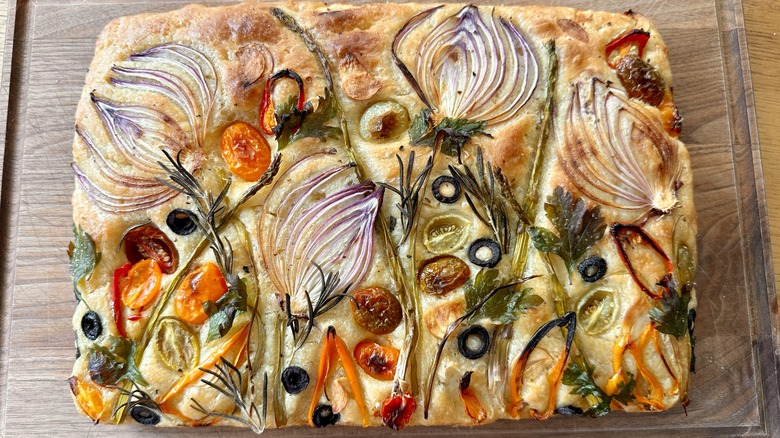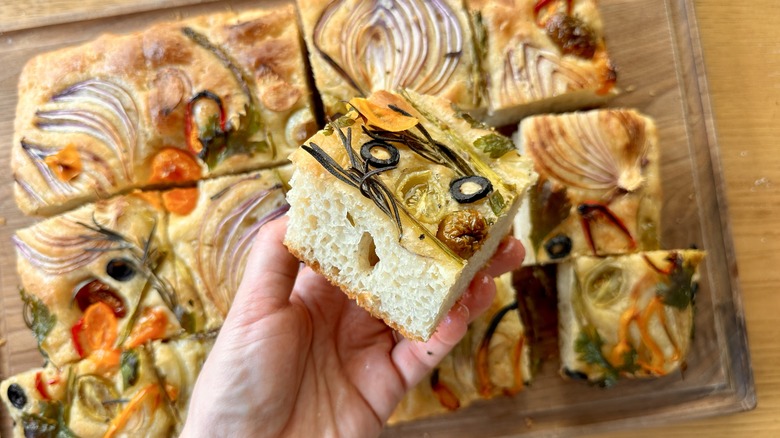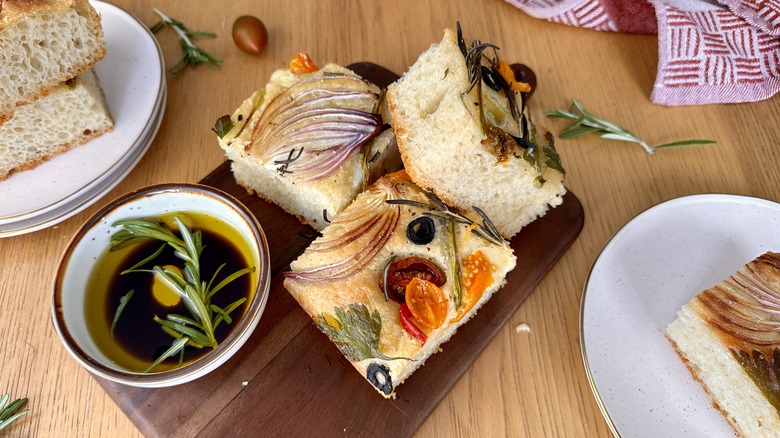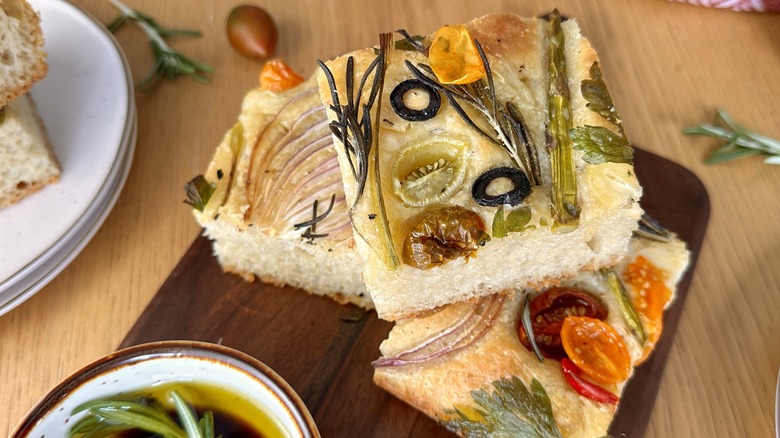Garden Art Vegetable Focaccia Recipe
Focaccia is an Italian flatbread known for its richness, dimpled exterior, and crispy, airy texture. It's the perfect bread for creating big, rustic sandwiches, slicing into small rectangles and dipping into seasoned olive oil, or enjoying on its own with a cup of coffee. This Italian staple is beloved around the world and recently experienced a resurgence in popularity thanks to a trend on social media that transformed this classic bread into an edible work of art.
Garden art focaccia brings a modern twist to traditional focaccia with a variety of fresh vegetables, herbs, edible flowers, and other adornments placed on top to resemble a garden-like landscape. As the focaccia bakes, the toppings settle into the dough, tenderize, and begin to brown for layers of flavor and texture with each bite. Recipe developer Katie Rosenhouse tells us, "Garden art focaccia offers a zen-like opportunity to use what your garden has to offer and create a unique bread that's as eye-catching as it is delicious. Not to mention, it's fun for cooks of all ages."
Gather the ingredients for garden art vegetable focaccia
To prepare the focaccia dough, you will use water, instant yeast, granulated sugar, bread flour, kosher salt, and olive oil. If you only have active dry yeast on hand, proof it first by warming the water, adding the yeast and sugar, and setting this aside until frothy. Granulated sugar can be substituted with honey or your other preferred sweetener, and the bread flour can be swapped with all-purpose, if needed. Note that bread flour has a higher protein content than all-purpose and will help you create a nice, crusty focaccia. Olive oil is a key component of focaccia, so use a high-quality oil for the best flavor.
To top the focaccia before baking, grab salt, black pepper, and a variety of vegetables — red onion, asparagus, green onions, cherry tomatoes, mini sweet peppers, flat-leaf parsley, rosemary, and black olives. Feel free to use your imagination and what you have on hand to create your own design.
Step 1: Prepare the dough
In the bowl of a stand mixer fitted with a hook attachment, combine 2 cups water with the yeast, sugar, flour, 2 ½ teaspoons salt, and 2 tablespoons olive oil.
Step 2: Mix until combined
Mix on medium speed for 6 to 8 minutes, until all of the ingredients are thoroughly combined into a sticky dough.
Step 3: Cover and set aside
Cover and set aside for 30 minutes.
Step 4: Uncover and fold
Uncover the dough. Wet your hands and then lift and fold the dough onto itself three or four times.
Step 5: Cover
Cover and set aside for another 30 minutes.
Step 6: Repeat
Repeat steps 4 and 5 twice.
Step 7: Oil the pan
Spread 2 tablespoons olive oil into a 9x13-inch baking pan.
Step 8: Transfer the dough to the pan
Pour the dough into the pan and coat with the remaining 2 tablespoons olive oil.
Step 9: Stretch
Gently stretch the dough to coat the bottom of the pan, taking care not to deflate any air bubbles along the way.
Step 10: Cover and let rise
Cover and let rise for 45 minutes.
Step 11: Preheat the oven
Preheat the oven to 400 F.
Step 12: Dimple the surface
Unwrap the dough and use your fingertips to dimple the surface.
Step 13: Top decoratively
Decoratively top the dough with the vegetables. Sprinkle with the remaining ½ teaspoon salt and the pepper.
Step 14: Bake until golden brown
Bake for 30 to 35 minutes, or until golden brown.
Step 15: Let stand
Let stand in pan for 10 minutes, and then transfer to a cutting board.
Step 16: Cut into portions and serve
Cut the bread into portions and serve warm or at room temperature.
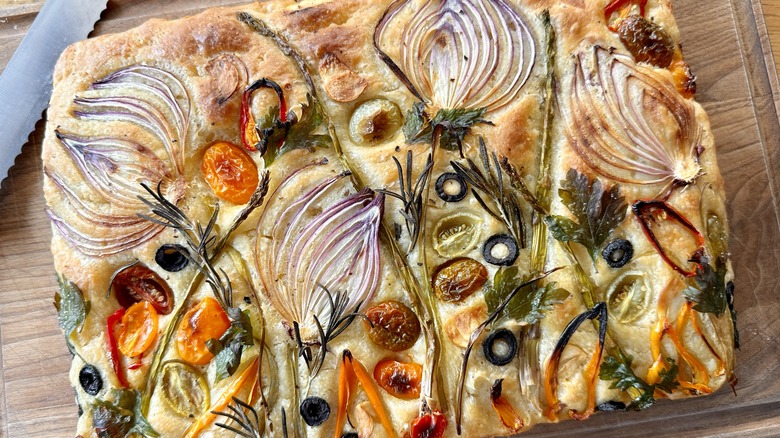
- For the focaccia dough
- 1 (¼-ounce) package instant yeast
- 2 teaspoons granulated sugar
- 4 ½ cups bread flour (or all-purpose)
- 1 tablespoon kosher salt, divided
- 6 tablespoons olive oil, divided
- ¼ teaspoon freshly cracked black pepper
- For the vegetable topping
- ½ small red onion, thinly sliced
- 3 spears fresh asparagus, trimmed
- 1 green onion, thinly sliced
- 6 multicolored cherry tomatoes, halved
- 3 multicolored mini sweet peppers, stemmed and thinly sliced
- ¼ cup fresh flat-leaf parsley leaves
- ¼ cup fresh rosemary sprigs
- 4 pitted black olives, thinly sliced
- In the bowl of a stand mixer fitted with a hook attachment, combine 2 cups water with the yeast, sugar, flour, 2 ½ teaspoons salt, and 2 tablespoons olive oil.
- Mix on medium speed for 6 to 8 minutes, until all of the ingredients are thoroughly combined into a sticky dough.
- Cover and set aside for 30 minutes.
- Uncover the dough. Wet your hands and then lift and fold the dough onto itself three or four times.
- Cover and set aside for another 30 minutes.
- Repeat steps 4 and 5 twice.
- Spread 2 tablespoons olive oil into a 9x13-inch baking pan.
- Pour the dough into the pan and coat with the remaining 2 tablespoons olive oil.
- Gently stretch the dough to coat the bottom of the pan, taking care not to deflate any air bubbles along the way.
- Cover and let rise for 45 minutes.
- Preheat the oven to 400 F.
- Unwrap the dough and use your fingertips to dimple the surface.
- Decoratively top the dough with the vegetables. Sprinkle with the remaining ½ teaspoon salt and the pepper.
- Bake for 30 to 35 minutes, or until golden brown.
- Let stand in pan for 10 minutes, and then transfer to a cutting board.
- Cut the bread into portions and serve warm or at room temperature.
What makes focaccia different from other breads?
Compared to other breads, focaccia is unique in its presentation, texture, and flavor. Focaccia is a rich flatbread, though it's noticeably thicker than other types of flatbreads. It's typically stretched and dimpled in a baking pan or rimmed baking sheet and drizzled with a generous bit of olive oil, and there's a nice contrast between its fluffy interior and crisp, golden-brown exterior. It's often produced using a high-hydration dough that once baked, helps create the bread's soft, open crumb. Dimpling the surface of the dough before baking enhances the airy texture by highlighting the air bubbles present throughout while also providing little pockets of space for the olive oil and seasonings to settle in.
How chefs use and top focaccia varies widely. It can be topped simply with olive oil, salt, and pepper and enjoyed on its own or topped with a variety of herbs, cheese, garlic, vegetables, and more. You may find it used as a base for hearty sandwiches or thick pizzas, served at the start of a meal with oil and vinegar for dipping, or pressed for paninis.
What other toppings can I use for a vegetable focaccia?
When it comes to topping your garden art vegetable focaccia, or any focaccia, the sky is the limit. To keep things simple, a mix of salt and pepper is the easiest place to start. Add crushed red pepper flakes, herbs de Provence, garlic powder, za'atar, or cumin seeds for a unique touch.
You can top focaccia with fresh herbs, such as rosemary, thyme, parsley, tarragon, basil, oregano, or chives. Sliced or minced garlic, caramelized onions, or lemon zest can each add a nice pop of flavor. When it comes to vegetables, the ripe ones in your garden or fridge are perfect. This easy bread recipe is made for using up those forgotten veggies. Top the focaccia with sliced mushrooms, bell peppers, squash, tomatoes, artichoke hearts, eggplant, leeks, sweet potatoes, fennel, or corn, whether you shape the combination to resemble a garden or not. You can even experiment with adding dollops of pesto, sprinkling on feta or mozzarella cheese, or drizzling the focaccia with truffle oil after baking.
